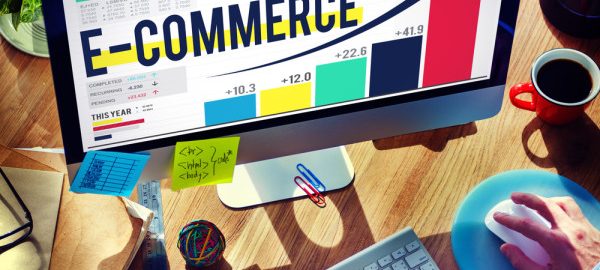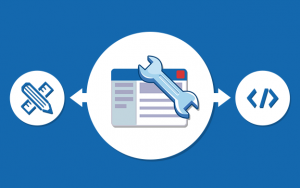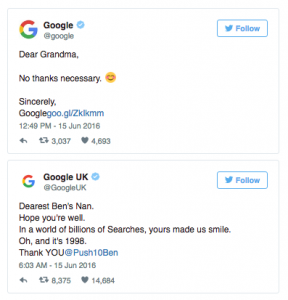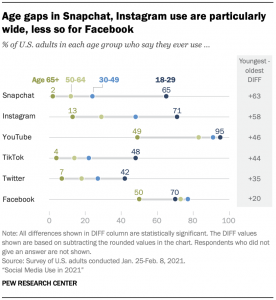
When you first launch an eCommerce store for a brand new online retail business, it’s exciting. There’s a real buzz which comes with removing a ‘coming soon’ page and letting the world see something which has likely been worked on for months. As an entrepreneur, there’s likely days and days of hard work that’s gone into finding stock, receiving stock and ultimately getting everything ready to begin trading.
The online store launches and … wait for it … wait for it … nothing happens!
If You Build It … They Won’t Come!
There’s still far too much naivety when it comes to the reality of launching an eCommerce store and too often it’s simply expected that by doing nothing other than launching and perhaps a few Tweets or Facebook status’ sales will come flooding in.
Unfortunately, at least for new brands and businesses, that couldn’t be further from the truth.
Launching an eCommerce store is only the start of it and a strategic (and high budget) digital marketing campaign is almost always needed to see any sort of return. The fact is that the online retail market is a crowded space, with an estimated 12 million eCommerce stores on the web and because of this very fact, it’s not unheard of in many niches to see the Pareto principle applied. That is, where 80% of the effects come from 20% of the causes. Or, in other words, where 80% of online spending happens with just 20% of retailers.
You’ve Got Traffic…Now Where Are The Sales?
What if, however, you’ve already invested in digital marketing and seen reasonably strong results? Maybe you’re running a Google Shopping campaign to leverage the opportunities which this innovative form of paid advertising offers to eCommerce retailers? Perhaps you’ve struck lucky with content marketing and had coverage on top-tier media outlets and even have some top ranking search engine positions as a result?
Welcome to the world of conversion rate optimisation. Very few eCommerce stores are perfect first time round, with many never hitting that sweet spot where the highest possible conversion rate is achieved.
Increasing the conversions through any website, be that eCommerce or not, takes time and it’s important that entrepreneurs launching a new venture are fully aware of that. Yes, a great digital marketing campaign will deliver some sales, there’s no doubt about that, but if fundamental issues exist with an online store which are placing a barrier between landing on the site and converting, the conversion rate will never be as high as it should be.
Conversion rate optimisation is often a long, drawn out process which involves collecting data using tools such as CrazyEgg, Decibel Insight or Clicktale, analysing this data, carrying out A/B testing to determine the right changes to roll out on a more permanent basis and making these changes across a store, based on the knowledge gained from rigorous testing. Conversion rate optimisation must be an on-going process; however, there’s a number of things which can be actioned almost straight away which are proven to increase conversion rates.
Change To Lifestyle Based Product Images
Consumers are getting smart. They no longer simply want to browse an online store but want to experience it at the same time. If a brand truly wants to succeed in the eCommerce sphere, brands must engage their audiences and provide them with premium experiences along their whole journey, from the moment they first land until they’ve completed the checkout.
One proven way to entice an experience is to change from boring old ‘product on a white background’ images to lifestyle-led ones. Dependent on the industry which a store operates within, portraying a product in a lifestyle setting allows the browser to visualise it in use rather than simply on a plain background. This aids making a connection with a product and, above all else, helps to encourage a purchase.
Include Videos Alongside Images
It’s been proven many a time that using video can help eCommerce retailers to increase conversions, yet still many businesses choose not to invest in this area. Further to using lifestyle-based images for product shots, videos help to create a desire to purchase a product and help to sell better than images alone.
Whilst it can be costly to have bespoke videos put together for each product, start with a few core product lines and build it up from there. It really is money well spent.
Change The Colour Of The “Add To Cart’ Button
Too many eCommerce retailers make the mistake of keeping the ‘add to cart’ button on product pages the same colour as the site’s main theme. If this is the case for you then change it, ASAP! With this button being the main call to action on any eCommerce store, it’s important that it stands out. Unbounce have previously outlined that the future of the call-to-action buttons is BOB (Big Orange Button). Don’t be afraid to experiment here … that’s what conversion rate optimisation is all about after all.
If nothing else for the moment, ensure it doesn’t blend into the rest of the site and that the colour makes the button the most prominent call to action on the product page.
Craft Great Product Copy
If anyone ever told you that the product copy on an eCommerce store is only for SEO purposes, forget everything they ever told you! Great product copy really can help to sell and it’s important that you get this right. If you take a read over a selection of your products and find unimaginative copy awash with spelling and grammatical errors, how does that present you to a potential customer who isn’t familiar with your brand? Not very well at all is the answer.
Take time to get your product ‘copy’ right and never underestimate the value of a good copywriter. No, they don’t come cheap but, as with videos, it’s money well spent.
FREE Shipping
Noticed that your competitors have dropped their shipping charges recently? There’s usually a very good reason for that. For many consumers, adding a shipping charge at the checkout stage is one of the main reasons for abandoning the basket and, with that in mind, it’s often the case that retailers are offering free shipping. Of course, this must be worked into the price somewhere and there are proven ways to make free shipping profitable, however if you’ve only ever charged a set rate and have never experimented with different charges and even free shipping, how do you know what works best?
Do yourself a favour and run a free shipping weekend as a trial. Without any further promotion, compare conversion rates with the weekends either side. If you see even a marginally higher conversion rate when running with free shipping, you can be confident that by making the change a little more permanent you’ll reap the rewards.
At the end of the day, even a small increase in the overall conversion rate of an eCommerce store can have a large impact on revenue and profit over the course of a month or a year and if, as an entrepreneur or manager of an eCommerce store, you’re not actively looking to make changes for the better, you’re likely missing out on significant revenues.
Digital & Social Articles on Business 2 Community(45)









